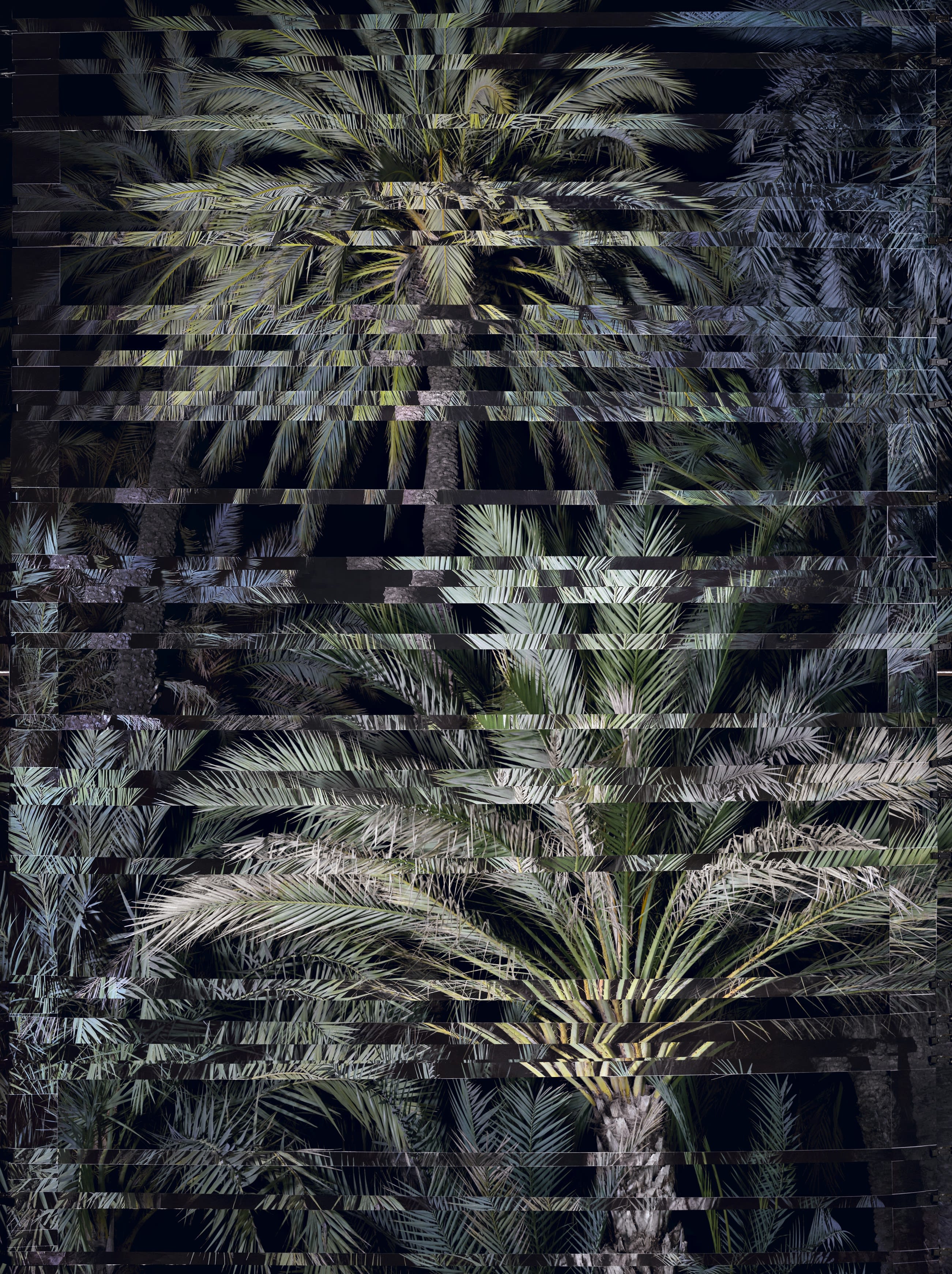The project spans installation, film, and photography that traverses contrasting landscapes – from tropical rainforests and coastlines, to swamplands and snow-capped mountains.
Goudal is interested in dissecting the “layers within an image”, a perspective she developed during her studies at RCA. She was encouraged to consider “the image as a composition”, prompting her to “build” a photograph, rather than capturing a pre-existing scene.
In Post Atlantica, all of the images were created entirely within the landscape. She works on-site, creating large photographic prints and embedding them back into the scene to photograph. In doing so, Goudal is attempting to “make a parallel between the geological layers and the layers inside an image”. And, in many ways, the process of construction is more important than the final outcome; photography is merely a vehicle to communicate that process.
Goudal recognises that it is difficult to explore the relationship between humans and nature without addressing the climate crisis. “This is our main concern at the moment… But I’m more interested in looking at the landscape with a broader understanding,” she says.
After all, paleoclimatology places humankind within the history of our climate. If Earth was one year old, human evolution would take place in the last 23 minutes. Thus, rather than asking questions about how we can lower emissions or change our lifestyle, Goudal is more interested in thinking about how we can reconcile our relationship with nature, and re-define our place on Earth as its temporary guardians.



